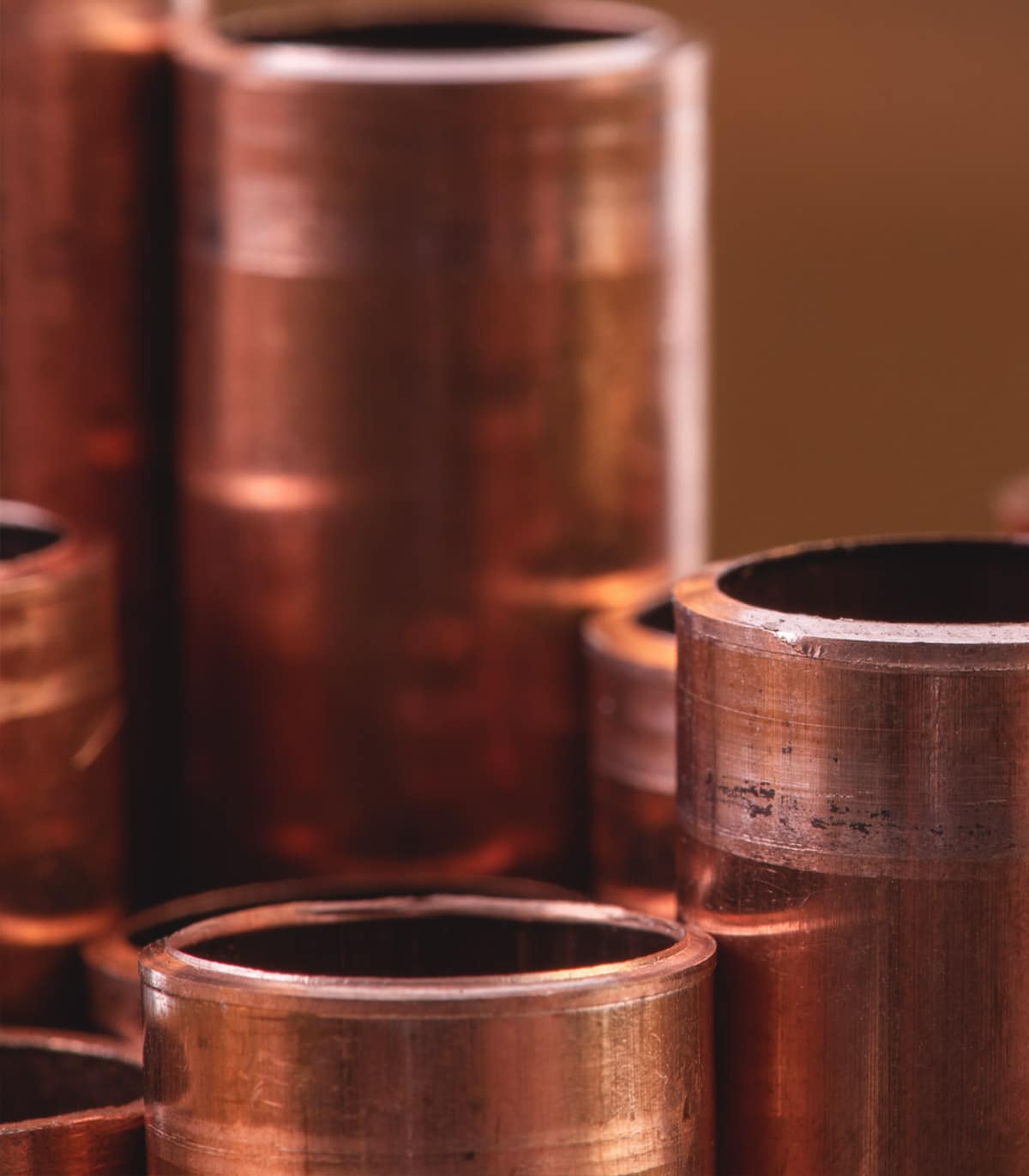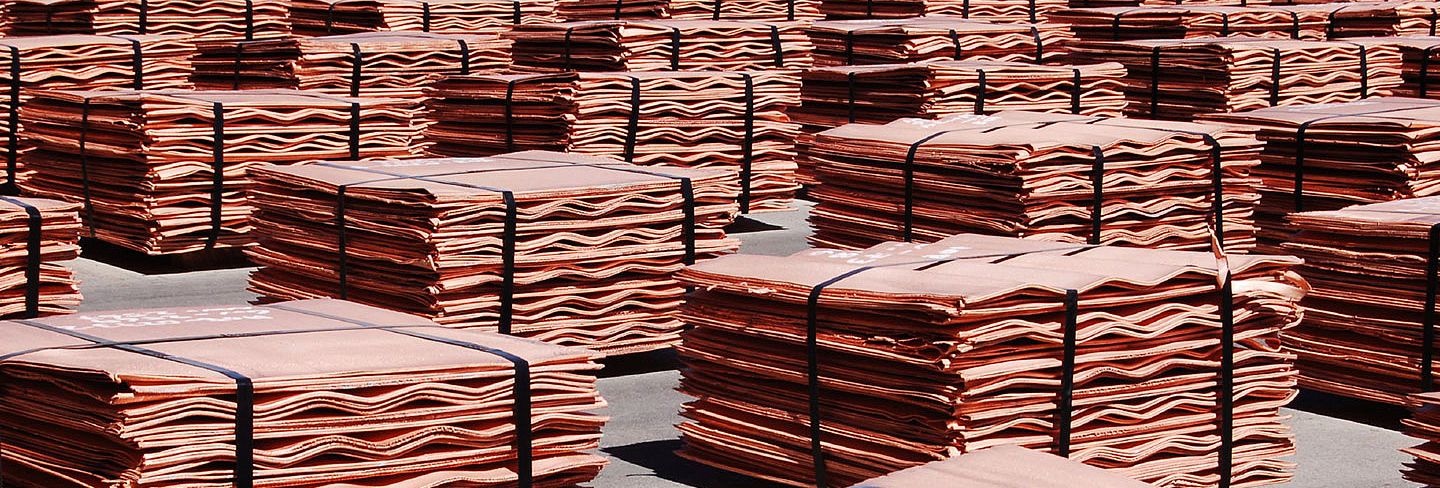Discovering the Diverse Applications of Copper Products in Modern Industries
Copper items have actually developed themselves as indispensable components across a myriad of modern-day markets, primarily as a result of their remarkable conductivity, malleability, and resistance to rust. From improving the efficiency of electrical systems to playing a critical role in renewable energy technologies, the versatility of copper appears. In addition, its recyclability settings it as a lasting selection in production and electronics. As industries progressively prioritize technology and sustainability, the diverse applications of copper call for a closer examination, particularly concerning their prospective influence on future technological improvements and ecological techniques.
Electric Applications of Copper
Copper is an essential material in the electrical market, making up around 60% of the complete demand for non-ferrous steels globally - Copper Products. Its premium electrical conductivity, which is nearly twice that of light weight aluminum, makes it the preferred option for a variety of electrical applications. From wiring systems in property and industrial structures to high-voltage power transmission lines, copper makes sure efficiency and dependability in power shipment
In addition to wiring, copper is indispensable to the production of electrical elements such as generators, transformers, and electric motors. These parts leverage copper's thermal conductivity and pliability, important for warm dissipation and efficient performance. In addition, copper's resistance to deterioration improves the lifespan and sturdiness of electric systems, making it a cost-efficient solution in the long-term.
The growth of eco-friendly power sources, such as solar and wind power, has additionally increased the need for copper in electric applications. As markets change in the direction of lasting power solutions, copper's role becomes even more crucial. Overall, the convenience and efficiency characteristics of copper solidify its condition as a foundation material within the electric field, driving innovation and efficiency across different applications.
Plumbing and Piping Solutions
In modern pipes systems, the option of products significantly impacts both performance and longevity. Copper has actually emerged as a recommended choice because of its one-of-a-kind properties, consisting of corrosion resistance and antimicrobial characteristics. These characteristics ensure that copper piping stays risk-free and resilient for delivering safe and clean water, an essential factor to consider in household and commercial applications.
One of the vital advantages of copper in plumbing is its capacity to endure high temperatures and stress, making it ideal for a variety of applications, from hot water systems to heating and cooling down networks. Furthermore, copper's versatility permits easier installation in complicated piping layouts, minimizing the risk of failures and leaks.
One more noteworthy advantage is copper's lengthy life-span, usually surpassing 50 years with proper upkeep. This durability not just reduces replacement costs but also adds to lasting techniques by decreasing waste. Copper's recyclability lines up with contemporary environmental criteria, promoting a round economy within the plumbing industry.
Copper in Renewable Resource
The adaptability of copper prolongs past plumbing applications, playing a crucial duty in the renewable power field. In solar panels, copper is utilized in photovoltaic or pv cells and wiring, assisting in reliable energy conversion and transmission.

Additionally, as the worldwide demand for electrical cars (EVs) boosts, copper's duty in battery systems and billing framework becomes much more considerable. The product's capability to carry out electrical power effectively is essential to the efficiency of EV batteries, boosting array and billing rate.
Copper's Duty in Electronic devices
Electronic devices producing counts heavily on copper's outstanding residential properties, particularly its high electric conductivity and thermal effectiveness. These attributes make copper a suitable choice for a vast array of electronic elements, consisting of ports, motherboard, and wiring. The metal's capacity to efficiently send electrical signals makes certain very little power loss, which is vital in high-performance electronic tools.
Additionally, copper's thermal conductivity plays a substantial function in warm dissipation, securing sensitive elements from overheating. This is specifically important in modern-day electronic devices, where small styles result in raised warmth generation. Copper is also favored for its malleability and ductility, enabling it to be conveniently formed right into detailed designs that satisfy the demands of advanced electronic applications.
With the increase of customer electronic click this link devices, telecommunications, and electrical cars, the demand for copper in the electronics sector proceeds to expand. As developments in modern technology progress, copper continues to be integral to accomplishing greater performance and integrity in electronic products. Its recyclability further enhances its allure, as producers look for lasting options without endangering quality. Hence, copper continues to be a cornerstone material in the ever-expanding area of electronic devices.
Ingenious Uses in Production

One remarkable application is in additive production, where copper-based materials are used in 3D printing procedures. This enables the development of lightweight parts and complicated geometries, specifically in the aerospace and vehicle markets. Additionally, copper's thermal conductivity makes it a suitable selection for warmth exchangers, boosting effectiveness in commercial air conditioning systems.
Furthermore, the surge of clever manufacturing has seen the incorporation of copper in IoT devices, where its conductive abilities support sophisticated noticing technologies. In the realm of renewable resource, copper is pivotal in the manufacturing of solar panels and wind turbines, facilitating extra effective power conversion and distribution.
As sectors pursue sustainability and technology, copper's adaptability and efficiency continue to position it as an essential material, driving innovations in production and adding to the development of smarter, extra effective items.
Conclusion
In summary, copper items demonstrate impressive flexibility throughout different modern-day sectors. Copper Products. Their remarkable conductivity boosts electrical applications, while rust resistance guarantees integrity in pipes. The essential duty of copper in eco-friendly power and its vital feature in electronics emphasize its relevance in advancing sustainable methods. Furthermore, cutting-edge uses in manufacturing emphasize copper's versatility and withstanding value. Collectively, these applications illustrate copper's essential contribution to technological development and commercial efficiency official source in contemporary society.
From enhancing the effectiveness of electric systems to playing a critical function in sustainable energy technologies, the flexibility of copper is obvious. As sectors increasingly prioritize innovation and sustainability, the diverse applications of copper require a closer assessment, particularly concerning their possible impact on future technological innovations and environmental methods.
The development of sustainable energy resources, such as solar and wind power, has additionally increased the demand for copper in electric applications. Overall, the adaptability and performance qualities of copper solidify its standing as a cornerstone product within the electrical industry, driving technology and effectiveness throughout different applications.
The adaptability of copper expands beyond plumbing applications, playing a crucial role in the eco-friendly energy field.